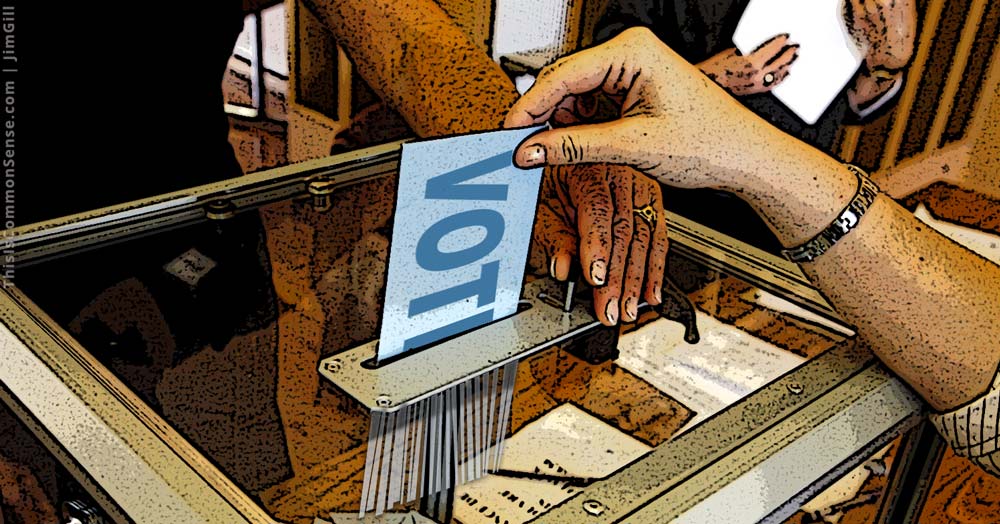Last November’s biggest mistake? Colorado voters passing Amendment 71. It makes the Rocky Mountain State’s constitution exceedingly more difficult for voters to amend through the initiative petition process.
And more like it may be in the offing. Legislation is moving in Florida to require a 66.7 percent vote to amend the state constitution. Already, a 60 percent vote is required, but legislators remain fearful voters can muster that.
The Ohio Modernization Commission, a legislatively created mix of legislators and insiders, is recommending a new constitutional amendment to — you guessed it — make it tougher for voters to pass amendments. Future voter-initiated amendments must pass twice, by a 55 percent supermajority.
There are also efforts to weaken citizen initiatives in Arizona and Maine.*
The big money behind Colorado’s Amendment 71 told whopper after whopper to win. They pretended to love and revere the constitution. Finally, they put former Denver Broncos Super Bowl champion quarterback John Elway on television — spot after spot — telling voters the amendment “protects our constitution.”
But . . . from whom?
You see, politicians and special interests don’t have to amend the state constitution to spend money on themselves or their cronies. From their perch in the state capitol, they can do that with a simple statute.
But you and I need the ability to pass constitutional amendments. Why? Only through the constitution can we limit the power of those same politicians — the power of government. Legislators can overrule a mere statutory ballot initiative (and often do).
That’s what this battle is all about. Politicians mean to limit our power to limit theirs.
This is Common Sense. I’m Paul Jacob.
* Thankfully, South Dakota legislators defeated several bills aimed at making it tougher to place initiatives on the ballot.


3 replies on “Whose Constitution Is It, Anyway?”
After living in California for 44 years I can confirm that the initiative process is a mixed blessing.
With enough money behind it, virtually any imaginable legislation can be placed on the ballot and become part of the California constitution or state law.
Much of what is wrong with California are laws enacted thru the initiative process, typically by voters with no idea whatsoever what they were voting for.
Most distressing is the advertising that typically has no relationship to the issue involved, typically, “Vote to curb union or government power and your children will die of various diseases.” Refuse to approve some new government overreach and, ““Your children will die from air or water pollution.”
Typically, voters who may understand the issue are confused about if the “Yes” or “No” vote is the one that actually reflects their position on an issue.
Prentiss — The initiative, just like any democratic process, is a mixed bag or a double-edged sword. But it does not cut 50/50. The measures passed that enhance the power of government or do economic or social mischief (usually by expanding the power and authority of government) are likely sped up by the initiative, but would soon enough be passed by legislators because they empower legislators. Whereas, the measures passed by initiative — Prop 13 and term limits come to mind — which rein in government, stand little chance to ever make it through a legislature, because they impinge on the self-interest of politicians and powerful interests.
The point of this commentary is that if we lose the ability to amend our constitutions without approval by legislators, i.e. thru the initiative, we are at the mercy of the political class.
Are voters fooled? Sometimes. But rarely. Not as often as politicians get fooled or embrace a bad idea for corrupt reasons. Even when special interests spend millions against little opposition in terms of money, they have been defeated. Big money can sometimes defeat a good idea, but rarely does an idea get a YES vote because it outspends the NO side. Years ago, PG&E in California spent $46M on a ballot measure, outspending the NO side 550 to 1 and still lost.
http://www.latimes.com/gnp-pollandscape061010-story.html
I hear people, both from California and elsewhere, make the claim you make. But rarely if ever do they name any of the initiatives that caused the problem. I’d be interested to know which initiative measures you would blame for CA’s problems. The big problems in CA have come from their legislature.
I don’t think supermajorities to amend fundamental documents are wrong. After all, the reason we have constitutions is to protect minorities from ephemeral majorities. If a simple majority can change things anytime, why have constitutions?